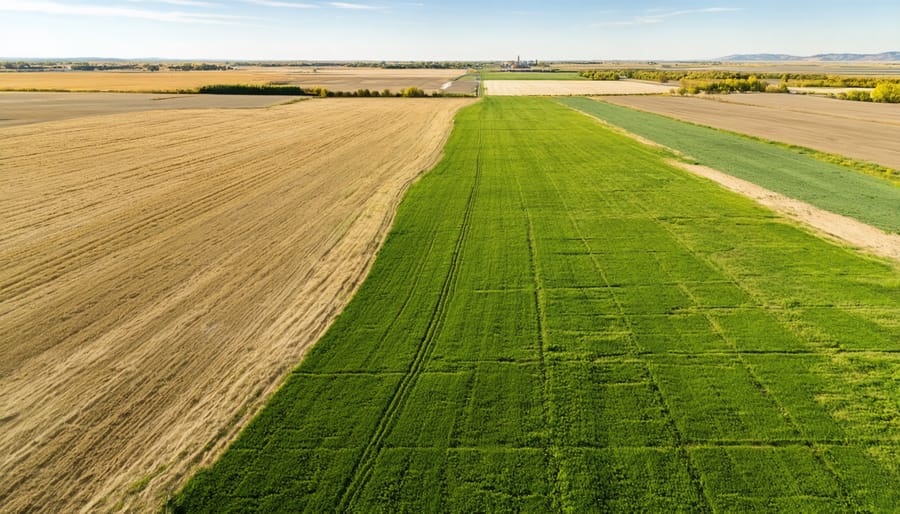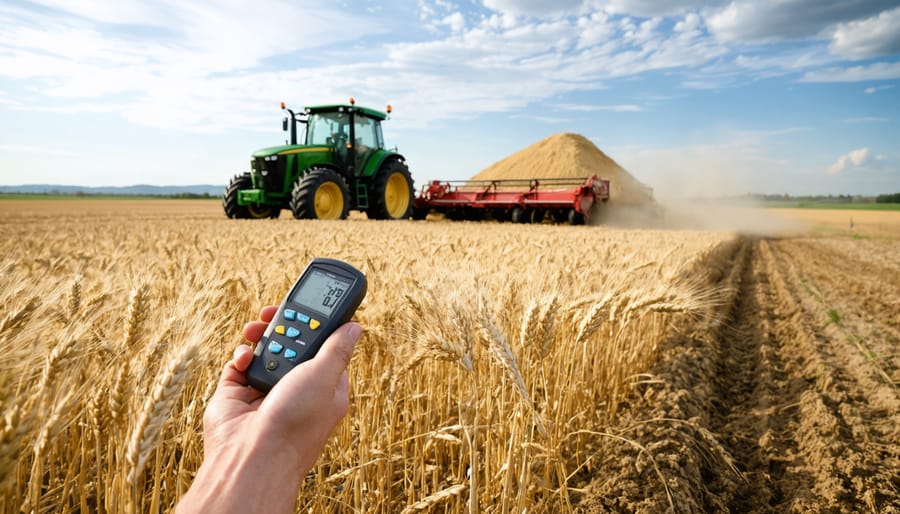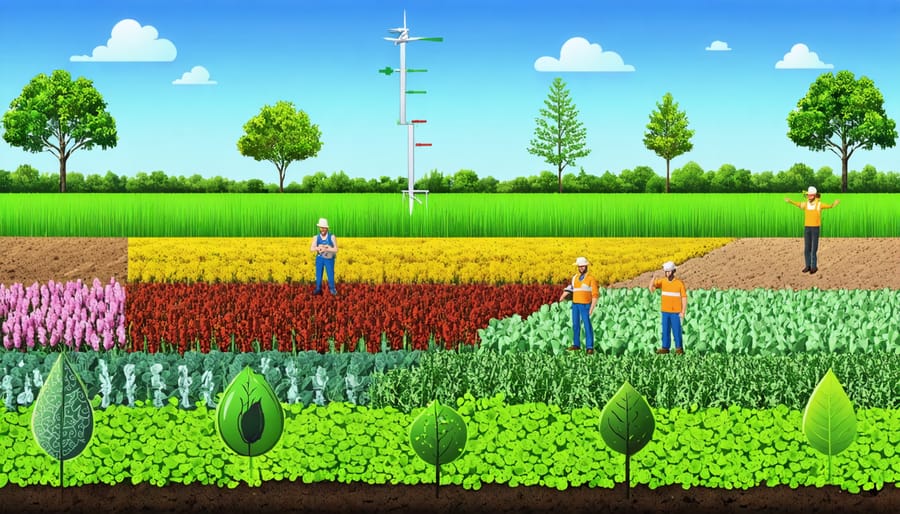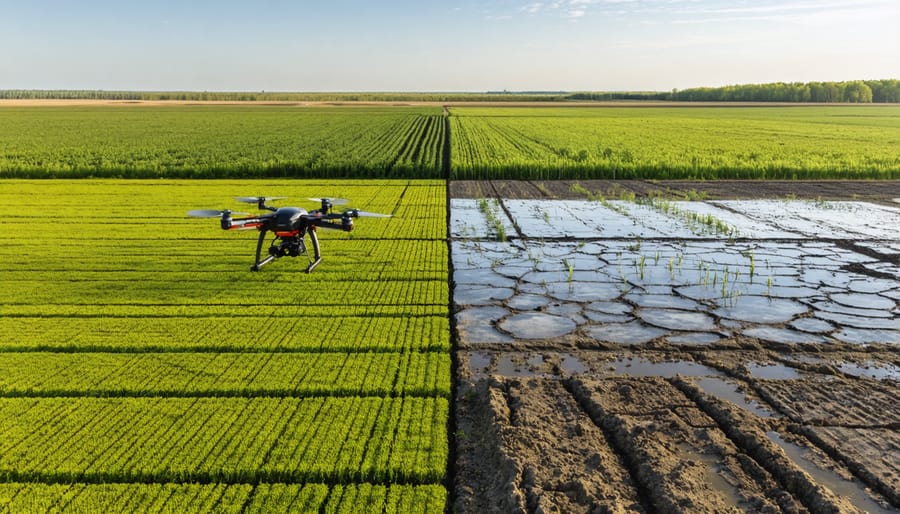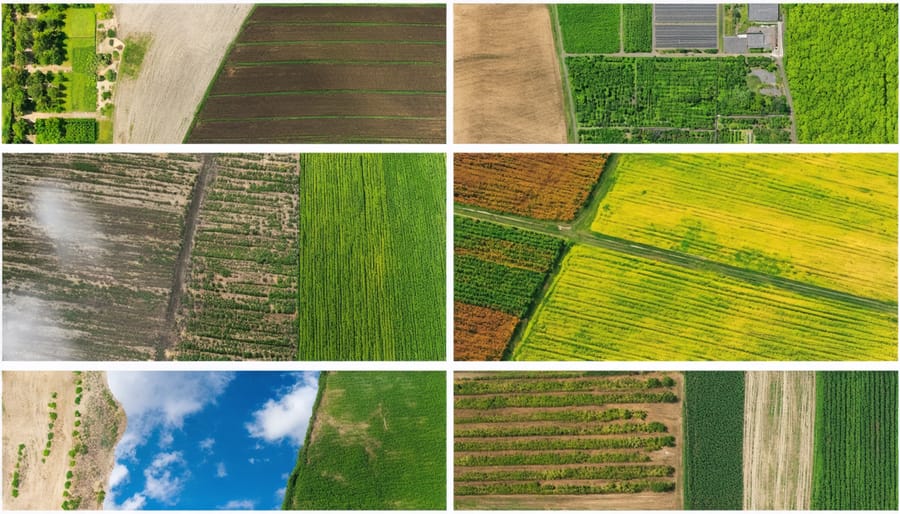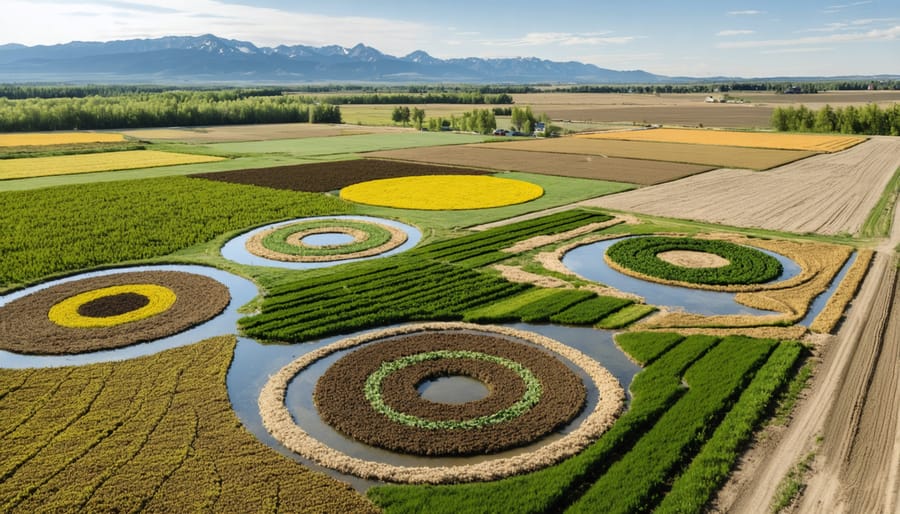As Alberta’s forests face unprecedented climate pressures, adaptive silviculture emerges as a critical strategy for ensuring long-term ecosystem resilience. This science-based approach combines traditional forest management with climate-forward thinking, enabling forest managers to proactively respond to changing environmental conditions while maintaining vital timber resources and biodiversity.
Across the province’s diverse forest zones, from the boreal mixedwood to montane regions, forestry professionals are implementing innovative practices that anticipate and adapt to climate challenges. These methods focus on enhancing forest resilience through strategic species selection, modified harvesting techniques, and dynamic management protocols that respond to real-time environmental changes.
The urgency of this transition cannot be overstated. Research from the Canadian Forest Service indicates that Alberta’s forests could experience significant shifts in species composition and productivity within the next 50 years. By embracing adaptive silviculture now, forest managers can help ensure these ecosystems continue to provide essential environmental services, support local economies, and maintain their role in carbon sequestration.
This evolution in forest management represents more than just a change in practices—it’s a fundamental shift in how we view and interact with our forest resources in an era of climate uncertainty.
Understanding Alberta’s Changing Forest Landscape
Climate Trends Reshaping Alberta’s Forests
Alberta’s forests are experiencing significant shifts due to changing climate patterns, with average temperatures rising by 1.4°C over the past century and winter temperatures warming even more dramatically. Our local forest monitoring stations have recorded longer growing seasons, with spring arriving about two weeks earlier than in the 1950s.
These changes are particularly noticeable in the boreal forest regions, where we’re seeing increased frequency of drought stress and forest fires. The Mountain Pine Beetle, previously controlled by cold winters, has expanded its range, affecting larger areas of our lodgepole pine stands. Many Alberta farmers and foresters have noticed changes in precipitation patterns, with more intense rainfall events but longer dry periods between them.
Local species like trembling aspen and white spruce are showing signs of stress in their traditional ranges, especially at lower elevations. Wetland areas within our forests are experiencing altered hydroperiods, affecting both timber production and wildlife habitat. These changes are creating new challenges for traditional forest management approaches, but they also present opportunities for innovative adaptation strategies that many Alberta communities are already embracing.
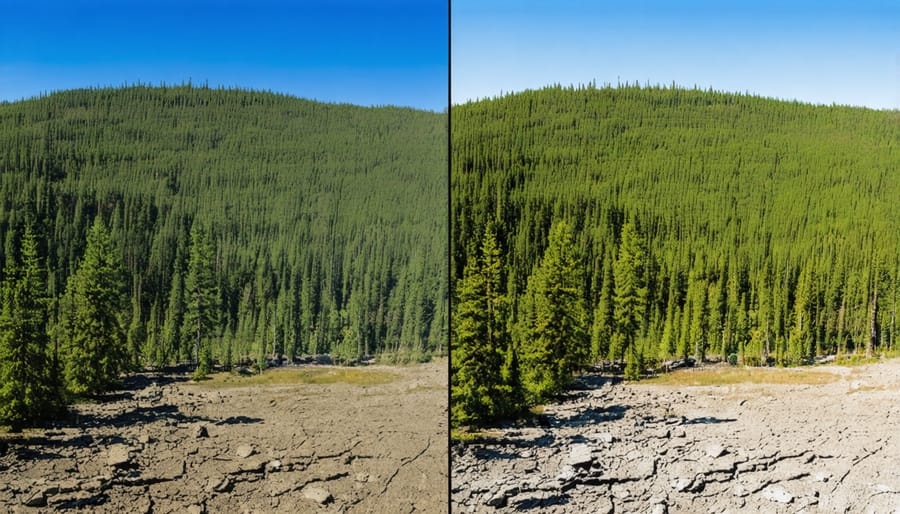
The Soil-Forest Connection
The health of our forests and soils are deeply intertwined in a vital ecological partnership. While trees provide essential organic matter and shelter from erosion, the soil beneath serves as both anchor and lifeline for forest growth. Here in Alberta, our research shows that healthy forest soils can store up to 50% more carbon than degraded soils, making them crucial allies in climate adaptation.
Understanding soil health in changing conditions is key to maintaining robust forests. As trees shed leaves and branches, they create a rich organic layer that feeds beneficial soil microorganisms. These microscopic helpers, in turn, break down nutrients that trees need to thrive and adapt to stress.
The relationship works both ways – healthy soils with good structure help forests weather both drought and heavy rainfall by improving water retention and drainage. This resilience is particularly important for Alberta’s forests as we face more extreme weather patterns. By protecting and enhancing this natural partnership through thoughtful forest management, we strengthen our woodlands’ ability to adapt to climate challenges while maintaining their vital ecological services.
Adaptive Silviculture Techniques for Alberta
Species Selection and Diversity
When selecting tree species for climate-resilient forests in Alberta, it’s crucial to consider both current and projected environmental conditions. Local native species like lodgepole pine and white spruce have already demonstrated their ability to thrive in our variable climate, making them reliable choices for many regions.
However, we’re seeing success with introducing certain hardy species from slightly warmer regions south of our traditional growing zones. For example, Douglas fir from southern populations has shown promising results in Alberta test sites, particularly in areas expecting warmer, drier conditions.
Diversity is your best insurance policy against climate uncertainty. Rather than creating single-species stands, aim for a mix of at least three to five compatible species with different characteristics. Consider including both early successional species like trembling aspen and later successional species like white spruce. This approach creates natural resilience while maintaining essential ecosystem services.
When selecting species, evaluate their tolerance to:
– Extended drought periods
– Temperature extremes
– Pest resistance
– Wind firmness
– Fire resistance
Local success stories show that incorporating species diversity has helped forests better withstand recent extreme weather events. For instance, mixed stands in central Alberta have demonstrated superior recovery after both drought and severe storm events compared to single-species plantations.
Remember to source your seedlings from reputable nurseries that maintain local genetic stock, as these are typically better adapted to our specific growing conditions.
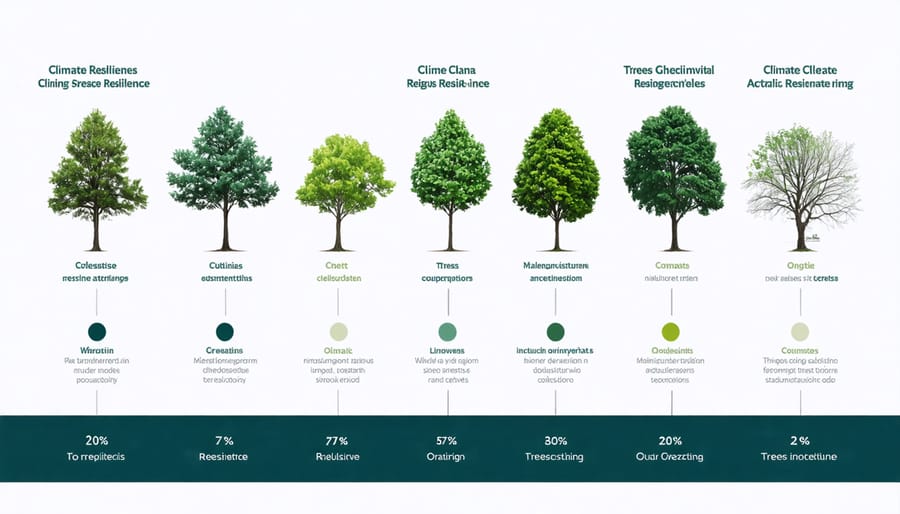
Soil Conservation Strategies
In Alberta’s changing climate, maintaining soil health is crucial for successful forest management. Our research shows that implementing targeted soil conservation strategies can significantly improve forest resilience and productivity.
Key practices include establishing diverse ground cover vegetation, which helps prevent soil erosion and maintains moisture levels during increasingly frequent dry spells. Native species like kinnikinnick and wild sarsaparilla are particularly effective in Alberta’s forests, providing both soil stability and habitat benefits.
Mulching with locally sourced organic materials helps regulate soil temperature and reduce water loss through evaporation. Local foresters report success using a combination of wood chips and leaf litter, which gradually decompose to enrich the soil structure.
Timing of forest operations is becoming increasingly critical. Schedule major soil-disturbing activities during periods when the ground is either frozen or sufficiently dry to minimize compaction. This typically means early winter or late summer in most Alberta regions.
Consider implementing buffer zones along waterways and on steep slopes, using native vegetation to prevent soil loss. These zones should be at least 30 metres wide on major slopes and around water bodies.
Regular soil testing helps monitor organic matter content and pH levels, allowing for timely adjustments to management practices. Many Alberta forest managers now conduct seasonal soil assessments to track changes and adapt their strategies accordingly.
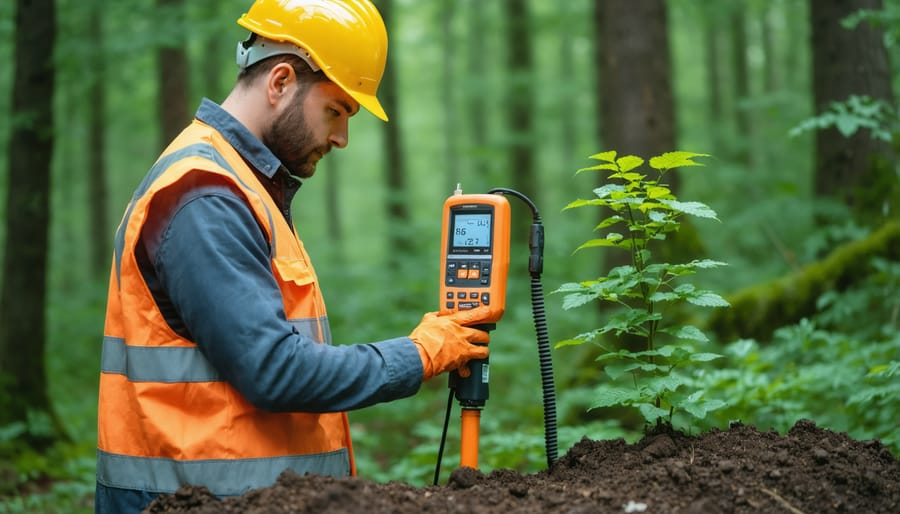
Water Management Innovations
In Alberta’s changing climate, innovative water conservation techniques have become essential for forest management. Leading forestry operations are now implementing micro-irrigation systems that deliver precise amounts of water directly to tree root zones, reducing waste by up to 40% compared to traditional methods.
Soil moisture sensors and weather monitoring stations are being strategically placed throughout forest stands to provide real-time data, allowing managers to make informed decisions about water distribution. These smart systems can automatically adjust irrigation schedules based on soil conditions and weather forecasts.
Many Alberta forest managers are also adopting bioswales and retention ponds, which capture and store rainwater for gradual release during drier periods. These features not only support tree health but also help maintain groundwater levels and prevent soil erosion.
Mulching practices have evolved to include locally sourced organic materials that maximize water retention while supporting native soil biology. Forest managers report up to 30% reduction in water requirements when using proper mulching techniques combined with strategic canopy management.
Local success stories include the Whitecourt Forest Area, where implementing these water management innovations has resulted in improved seedling survival rates and more resilient mature stands, even during drought conditions. These practices demonstrate how traditional forestry knowledge can be enhanced with modern technology to create more sustainable outcomes.
Implementation Success Stories
Central Alberta Forest Recovery Project
In 2018, the Central Alberta Forest Recovery Project emerged as a pioneering initiative in adaptive silviculture, spanning 2,500 hectares of mixed-wood forest near Rocky Mountain House. The project, led by local forestry expert Sarah Thompson in collaboration with regional farmers and Indigenous knowledge keepers, showcases how traditional practices can merge with modern climate adaptation strategies.
The project team implemented a diverse range of techniques, including assisted species migration and variable retention harvesting. They introduced drought-resistant lodgepole pine varieties while maintaining patches of native white spruce, creating a more resilient forest structure. What makes this project particularly successful is its community-driven approach, with local farmers and landowners actively participating in the decision-making process.
After five years, the results have been remarkable. Seedling survival rates increased by 35% compared to traditional methods, while soil moisture retention improved by 40%. The project area now serves as a living laboratory, demonstrating how adaptive management can create forests better equipped to handle climate uncertainties.
Local farmer Jim McKenzie, who participated in the project, notes: “We’ve seen a real difference in forest health, and the knowledge we’ve gained has helped us better manage our own woodlots. It’s about working with nature, not against it.”
The project continues to provide valuable insights for other Alberta communities looking to implement similar adaptive forestry practices, proving that local solutions can have far-reaching impacts.
Community Forest Management Results
Several successful community forest management projects across Alberta demonstrate the effectiveness of adaptive silviculture strategies. In Whitecourt, a community-led initiative has shown promising results by implementing mixed-species plantings that combine traditional white spruce with more drought-resistant lodgepole pine varieties. After five years, these forests have shown a 30% better survival rate during dry periods compared to single-species stands.
The Slave Lake Indigenous Forest Partnership offers another inspiring example. Local Indigenous knowledge helped identify climate-resilient tree species and traditional forest management techniques. Their approach of selective harvesting and maintaining diverse age structures has resulted in forests that are more resistant to pest outbreaks and better adapted to changing conditions.
In the Rocky Mountain House region, a collaborative project between local farmers and forestry experts has successfully integrated silvopasture practices. By combining tree coverage with grazing areas, participants have reported improved soil moisture retention and increased biodiversity, while maintaining agricultural productivity.
The Hinton Community Forest demonstrates how adaptive management can benefit both ecology and economy. Their monitoring program shows that areas using climate-adaptive techniques have experienced 40% less storm damage and improved regeneration rates compared to traditionally managed sections. These results have encouraged other communities to adopt similar approaches, creating a network of knowledge-sharing across the province.
Getting Started with Adaptive Silviculture
Assessment and Planning Tools
Several essential tools and resources are available to help Alberta forest managers develop effective climate-resilient forest management strategies. The Climate Change Atlas of Canada provides detailed projections for local climate conditions, helping managers understand potential changes in their region. This data can be combined with the Forest Vulnerability Assessment Tool (ForVA), which evaluates specific stand vulnerabilities to climate stressors.
For practical planning, the Adaptation Workbook, developed by the Northern Institute of Applied Climate Science, offers a step-by-step approach to developing site-specific management plans. This free online resource helps managers evaluate risks and opportunities while considering local conditions and management objectives.
Geographic Information System (GIS) mapping tools, available through Alberta Agriculture and Forestry, allow managers to analyze terrain, soil conditions, and species distribution. These maps can be overlaid with climate projection data to identify vulnerable areas and plan appropriate interventions.
The Forest Health Assessment App, designed specifically for Alberta’s conditions, enables real-time monitoring and documentation of forest health indicators. This mobile tool helps track changes over time and adjust management strategies accordingly.
Local forestry extension offices provide access to these tools and offer training on their use, ensuring forest managers can effectively implement adaptive strategies in their operations.
Available Support and Resources
Alberta offers a robust network of support for those looking to implement adaptive silviculture practices. The Alberta Agriculture and Forestry department provides dedicated extension services, including one-on-one consultations with forestry experts who can help develop site-specific management plans. These specialists understand local conditions and can offer tailored guidance for your forest management goals.
Several regional organizations offer workshops and training programs throughout the year. The Agroforestry and Woodlot Extension Society (AWES) regularly hosts field days and practical training sessions where landowners can learn directly from experienced practitioners. The Forest Resource Improvement Association of Alberta (FRIAA) provides funding opportunities for forest enhancement projects and climate adaptation initiatives.
Technical support is available through various research institutions, including the Canadian Forest Service and the University of Alberta’s Faculty of Agricultural, Life & Environmental Sciences. These institutions maintain demonstration sites where you can observe adaptive management techniques in action.
For financial assistance, the Canadian Agricultural Partnership (CAP) offers cost-sharing programs specifically designed for climate adaptation projects. Local Forest Management Associations can connect you with neighbouring landowners who have successfully implemented adaptive practices, fostering a community of knowledge-sharing and mutual support.
To access these resources, start by contacting your local forestry office or visiting Alberta Agriculture and Forestry’s website for detailed information about available programs and upcoming events.
The time to act on climate-adaptive forest management is now. As Alberta’s forests face increasing challenges from changing weather patterns and environmental stresses, implementing adaptive silviculture strategies isn’t just an option – it’s a necessity for our community’s future. By embracing these practices, we can build more resilient forests that continue to support our local economy and ecosystem for generations to come.
Remember that successful adaptation starts with understanding your specific forest conditions, setting clear objectives, and taking measured steps toward implementation. Whether you’re managing a small woodlot or overseeing larger forest operations, every action counts. Through collaboration, knowledge-sharing, and commitment to sustainable practices, Alberta’s forest managers and landowners are well-positioned to lead the way in climate-adaptive forestry.
Let’s work together to protect and enhance our forest resources, starting today with the strategies we’ve discussed. Your efforts matter, and they contribute to the broader goal of maintaining healthy, productive forests across our province.


